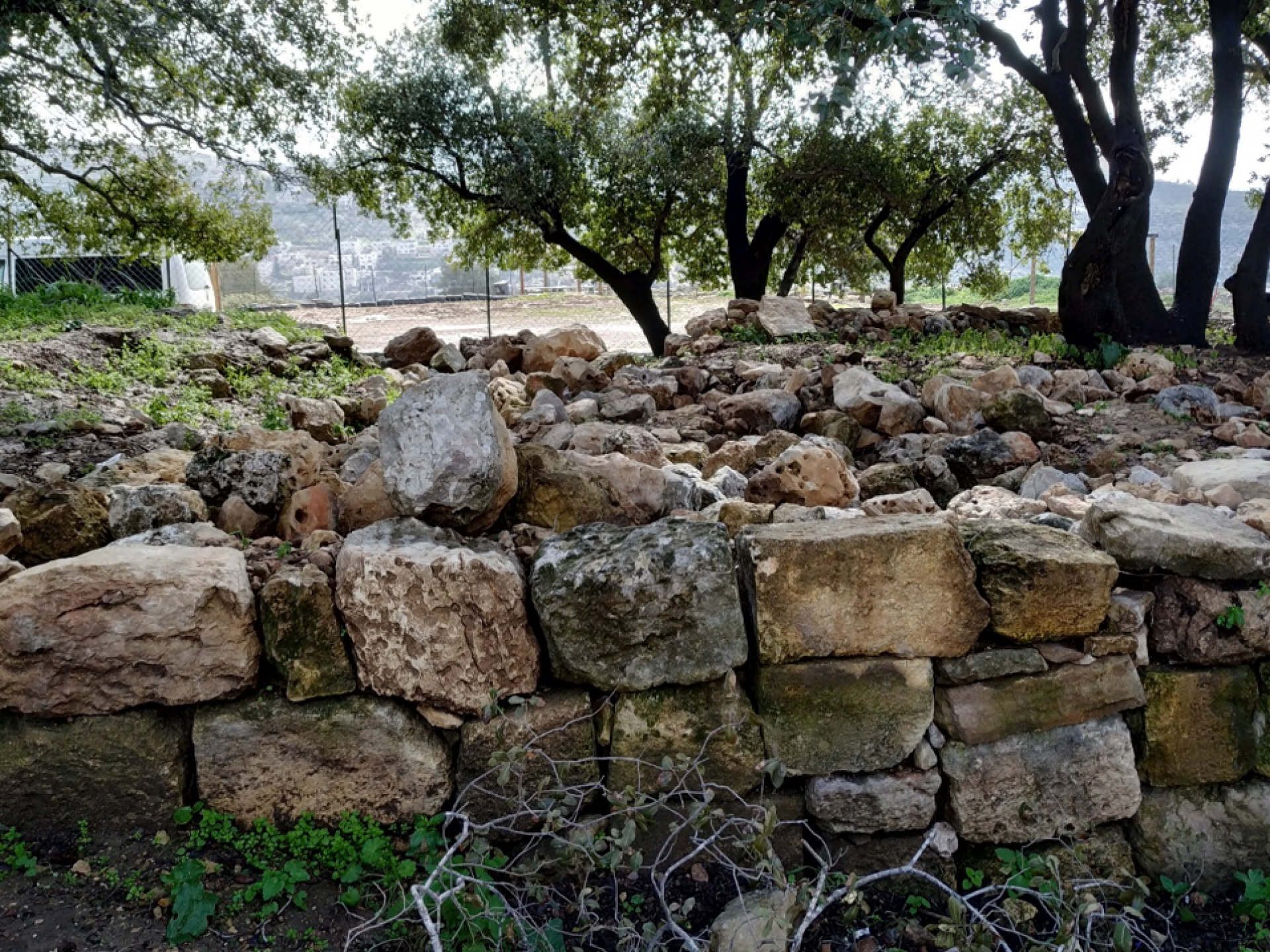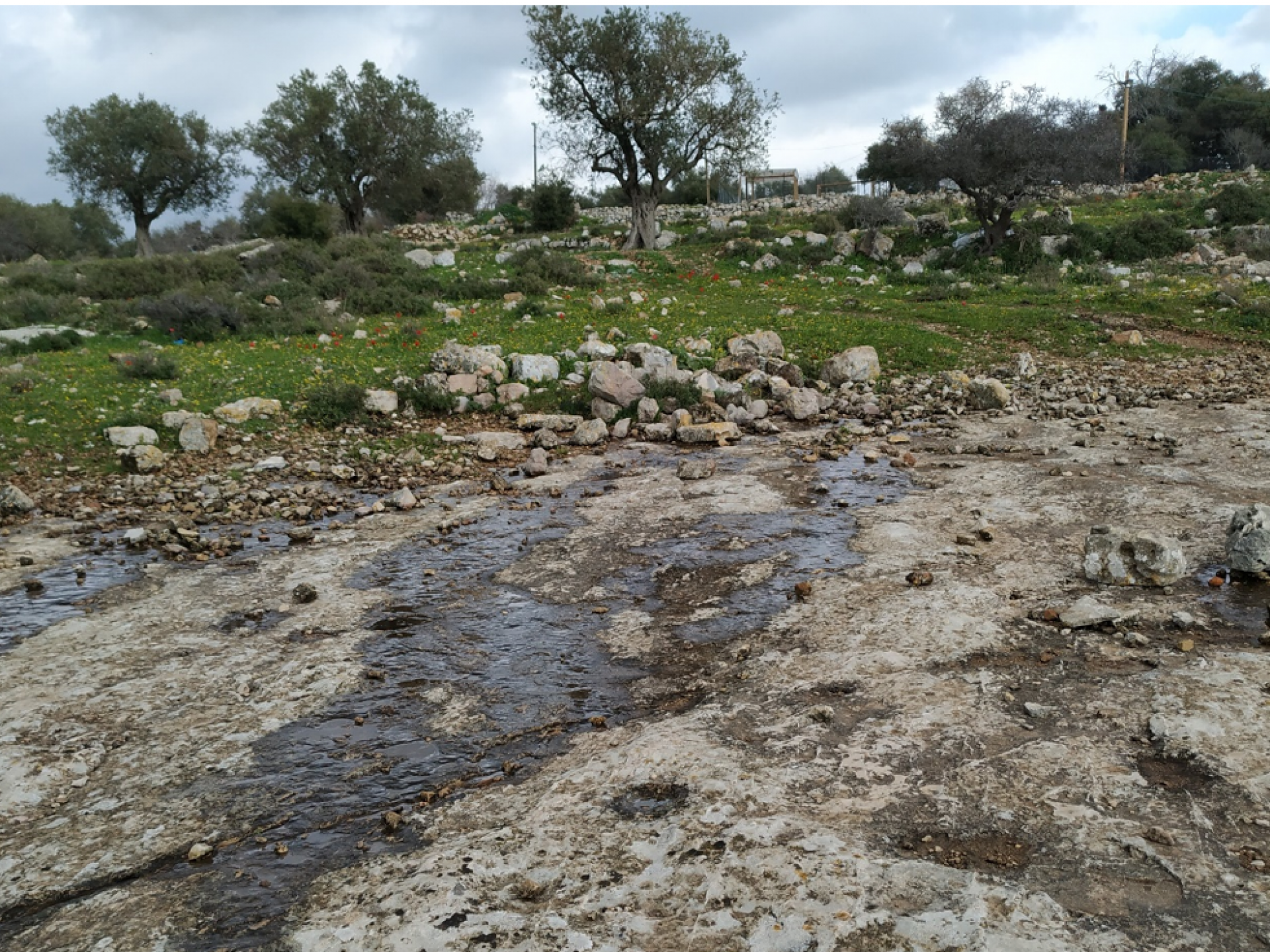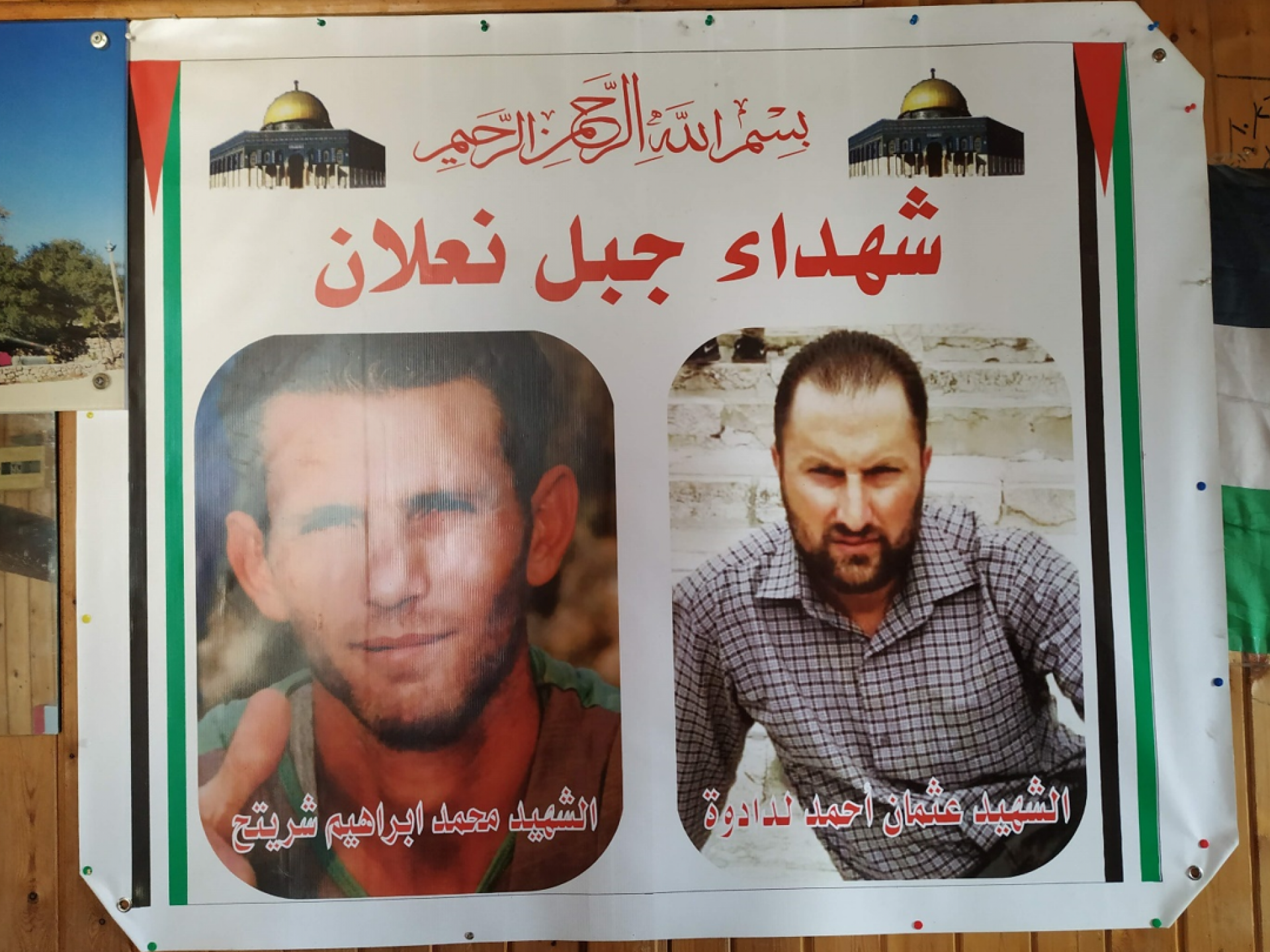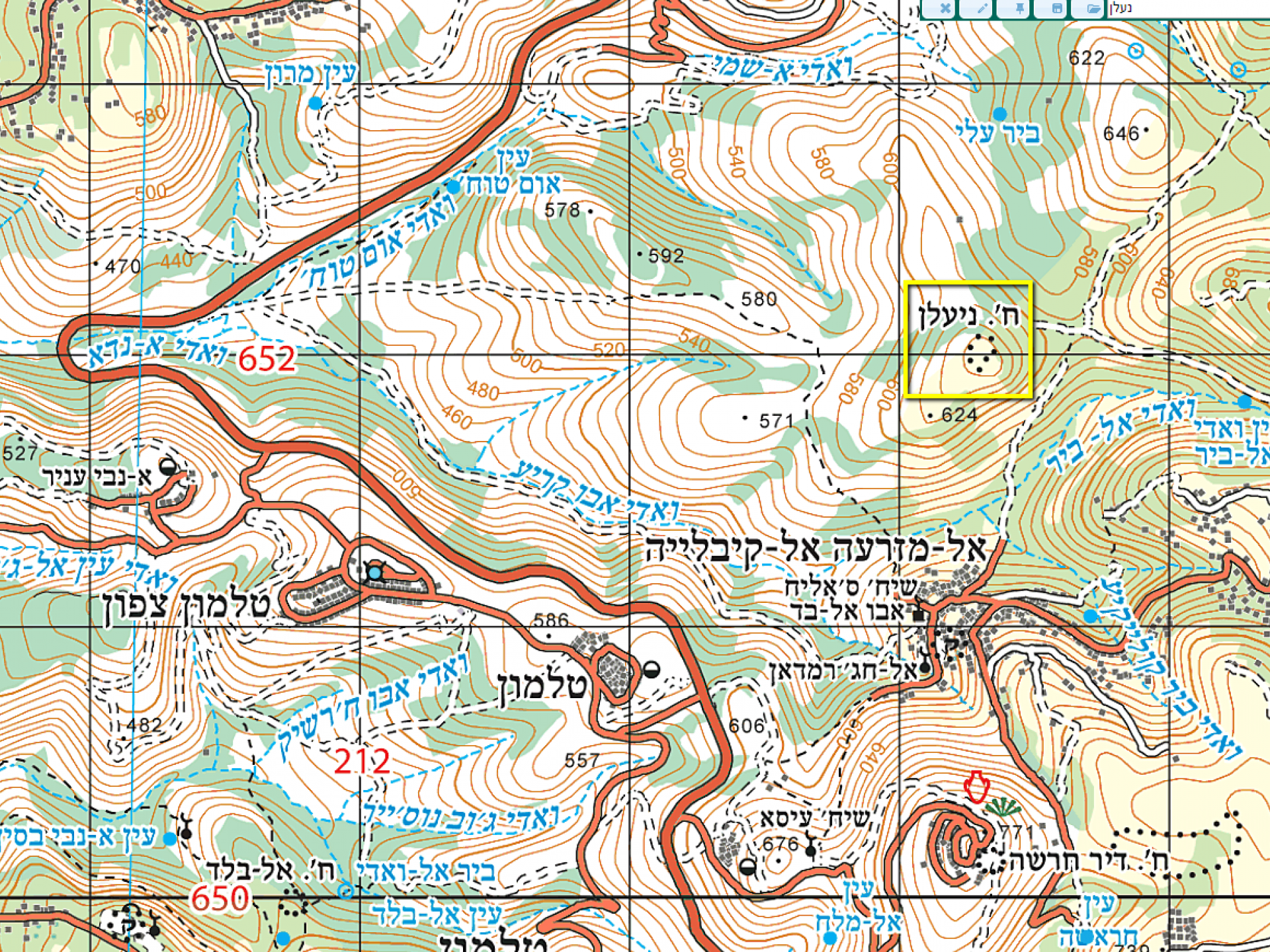Mazra’a Al Qabaliya

Maqam Nabi Anbar
We knew nothing about maqam Nabi Anbar until we came to the Palestinian village of Mazra’a Al Qabaliya, near the town of Bir Zeit. Our purpose was actually to find out about maqam Sheikh Issa that is inapproachably closed inside an archeological site inside the Talmonim settler-colony bloc. The internet map Amud Anan shows paths connecting Sheikh Issa and Mazra’a Al Qabaliya.
The head of this village council who is also the local school teacher, Abed Al Razek, welcomed us warmly and told us about the days when the fertile lands of his village – that was outstanding in its farming capacity, hence its name: Mazra’a in Arabic is ‘planting’ – were adjacent to the lands of the neighboring village of Beitilu. He speaks about the time before most of their lands were annexed in order to find the settler-colonist bloc of Talmonim and Nachlieli, that now disconnects Beitilu from Mazra’a Al Qabaliya. Back then, he told us, “we would walk to the three sites that were holy for us: Nabi Anbar, Sheikh Issa, and Nabi Anar – for hikes in nature, for prayer, for lighting candles and having picnics in the sacred oak and olive groves that surround the three maqams.”
Now the only one accessible is Nabi Anbar, located on the hill of Ni’alan, an archeological area of the Roman and Byzantine periods. One quarter of an hour’s walk from the center of the village, or 5 minutes’ drive, is the village’s recreation site containing the remains of maqam Nabi Anbar and its sacred ancient oak trees. The fact that it is in ruins does not detract from its sanctity, and does not keep the villagers from holding prayers and picnics there, says the village council head.


However, even this little bit of pleasure was spoiled when on the opposite hill, in 2011, the Kerem Reim settler-colonist outpost (belonging to the colony of Nachlieli) was founded. Its inhabitants have been paving access roads to the outpost right on the village lands and often visit the Ni’alan hill, even pray under the oak trees that are sacred for the Muslims. The Palestinian began demonstrations every Friday protesting the paving of roads, but these ended with the settler-colonists assaulting the villagers. This happened on October 26, 2018, on the flat rocky area in front of Nabi Anbar. At 12 noon numerous settler-colonists came and attacked the Palestinians. The Israeli army and Border Patrol arrived quickly to aid the settler-colonists, killed two villagers with live fire and wounded seven.

Khirbat Ni’lan
“Khirbat Ni’lan dates from the Second Temple period, and probably stood until the Bar Kochba uprising. It has also had habitation in recent centuries. There are remains of numerous structures on the surface, as well as dozens of large subterranean spaces, with arched ceilings. At the foot of the ruin are caves and burial niches of Roman-Byzantine origin. North-east of the ruin are remains, probably of a purification bath, from the period between the Second Temple and the Bar Kochba uprising. The ridge leading to the ruin from south-west contains two beautiful water holes, one of them with pure water. Such misleading information is typical and appear in every single website, contributing to the settler-colonists’ fighting spirit and their faith that they are acting in the name of the law, and that the Muslims are the outlaws. These days the Arabs destroy the artefacts there and try to overtake the place by illegal construction, in spite of its closeness to the Jewish settlement and the security threat this poses.”
Intervention in the contents of this website is most important. So far we have not managed to register as entitled to enter our contents and change it. The survey we have been conducting contains enormous amounts of factual information that is should be entered and included in the information provided by Amud Anan.
